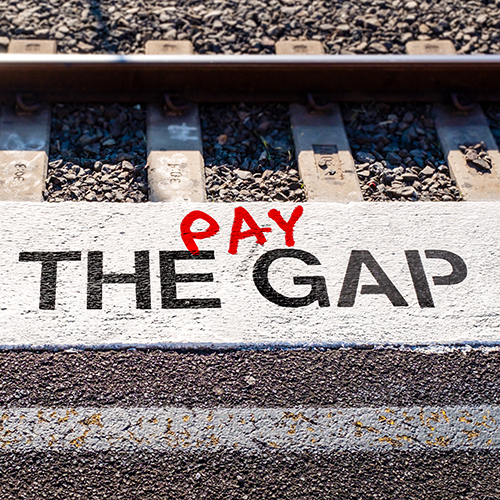Self-sabotaging diversity and profits in Aussie firms
18 August 2021

Confronting new research from the University of South Australia shows a significant gender pay gap across most Australian firms, with 80 per cent of them paying female executives 30-35 per cent less than their male counterparts, despite being of equal calibre, education, and achievement.
While it’s evidence that gender inequality is still live and (un)well in top tier management, it also reveals that the impact goes far beyond the individual, with large gender pay gaps directly associated with lower firm performance,
The world-first study assessed 539 ASX-listed firms across 10 years of data (2095 observations) to identify the implications of gender pay disparity in top management teams.
UniSA researcher, Professor Carol Kulik, says the study confirms that Australian businesses that are not compensating men and women equally, are effectively self-sabotaging their diversity efforts and overall firm profit.
“It might surprise people that gender pay gaps exist at very senior levels, but with senior performance criteria often vague and subjective – and gender stereotypes still rife – the resulting imbalance* is commonplace,” Prof Kulik says.
“We hear a lot about the benefits of women in executive levels. They provide different views and perspectives, reduce risks, improve decision-making, and promote performance, but if a firm has a large gender pay gap, promoting women to the top team will neither deliver benefits for the individual nor the organisation.
“Our research shows that gender pay disparities in top management teams negatively moderate the relationship between the women’s representation and subsequent firm performance.
“In dollar figures, if a male executive is paid 2.6 times that of their female counterpart, every woman added to the team will lower the firm’s annual return on assets by 2.2 per cent.
“The cause, we suspect, is that underpaying women sends a powerful signal that the organisation has low expectations about women’s contributions – that women executives have a lower status and less influence than their male counterparts.
“Women executives are then less forthright with their views; and men are more likely to discount their female colleagues’ opinions.
“Ultimately, a gender pay gap reduces the extent to which women’s voices can influence the executive’s actions and decisions, so the firm gets no value from the diversity within the team.”
The study controlled for executive quality, ensuring comparable education, executive role, tenure, and board memberships, to ensure women were not being discounted because they had less to contribute.
Co-researchers, Dr Yoshio Yanadori and Dr Jill Gould say that the research is a warning for organisations that are driving gender diversity initiatives.
“Organisations pay a price for gender inequality,” Dr Yanadori says.
“Just because an organisation has a good representation of women at the top doesn’t mean that they are a gender equal firm. Women’s representation is only one indicator.
“Stakeholders must dig deeper to establish whether the organisation is best positioned to use its visible gender diversity effectively.
“Gender diversity must be matched with equal pay. If organisations have women in senior leadership roles but pay them less than their male counterparts, they’re simply shooting themselves in the foot.”
Notes to editors:
*The typical gap between a male and female executive (using ballpark 2020 figures) is $1,385,457 as compared to $923,638.
The date of Equal Pay Day for 2021 will be announced 19-8-21 when the ABS Average Weekly Earnings data is released: www.wgea.gov.au/the-gender-pay-gap/equal-pay-day
Top 3 industries with large gender pay gaps (high risk of gender pay gap effects):
- Energy (oil & gas drilling, but excluding mining)
- Information technology (technology hardware, software, semiconductor)
- Industrials (machinery, transportation)
3 industries with small gender pay gaps (low risk gender pay gap effects):
- Health care (both products and services, pharmaceuticals)
- Financials
- Consumer Staples (food, beverages, and personal products)
…………………………………………………………………………………………………………………………
Media contact: Annabel Mansfield T: +61 8 8302 0351 M: +61 417 717 504
E: Annabel.Mansfield@unisa.edu.au
Researchers: Professor Carol Kulik E: Carol.Kulik@unisa.edu.au
Dr Yoshio Yanadori E: Yoshio.Yanadori@unisa.edu.au
Dr Jill Gould E: Jill.Gould@unisa.edu.au




